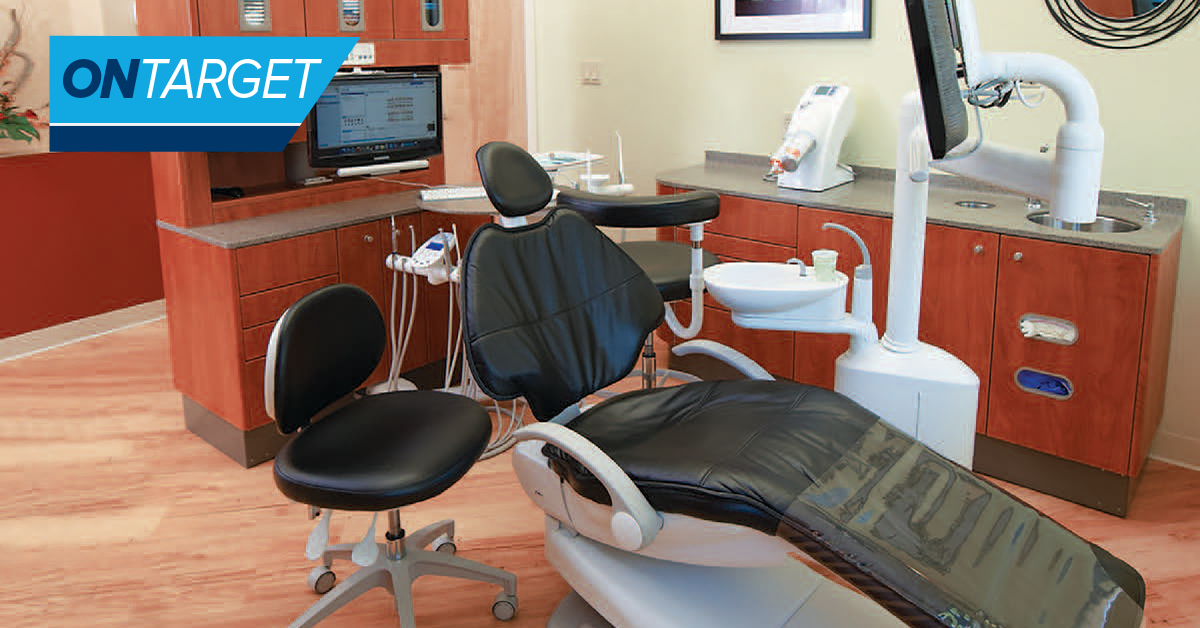In July 1963, a paper published by Blake in the British Medical Journal detailed high concentrations of bacteria in dental unit waterlines (DUWLs). This initial report was followed by several others from the Centers for Disease Control and Prevention (CDC) describing outbreaks in communities and healthcare
facilities caused by disease-causing waterborne pathogens. Specifically, Pseudomonas, Klebsiella, Legionella and species of nontuberculous Mycobacterium were isolated in dental water supplies. For individuals with healthy immune systems, these microorganisms generally are harmless. However, for those who are susceptible, including immunocompromised dental patients and personnel, the danger is much greater.
Since 2012, at least three incidents have occurred in which dental patients contracted life-threatening illnesses after receiving treatment at facilities with contaminated waterlines. This includes the death of an 82-year-old woman from Legionnaires’ disease after infection by aerosolized water during dental treatment in Italy. Although the Environmental Protection Agency (EPA), American Public Health Association and the American Water Works Association have established standards for safe drinking water – and water entering DUWLs from public supplies meets these standards – extremely high contamination levels have been recorded. Such high microbial concentrations can be attributed to DUWL design.
Conditions for concern
DUWLs distribute water to devices such as handpieces, ultrasonic scalers and air/water syringes during
treatment. Their long, narrow, dark interiors, coupled with inconsistent flow rates, periods of stagnation and, potentially, contamination by backflow/retracted oral fluids, provide ideal conditions for microorganisms like bacteria, fungi and protozoa to accumulate and thrive. Left untended, these organisms form biofilm, a protective polysaccharide slime layer that adheres to the surface of the tubing and encourages further microbial growth. Research shows that new dental tubing can develop a significant biofilm colony of 200,000 colony forming units (CFU)/mL in as little as 5 days. During DUWL use, pathogens can become dislodged and enter the water stream, subsequently posing an infection risk to patients – usually as a result of direct exposure during surgical procedures – and to dental professionals via inhalation of aerosolized microorganisms.
Expert guidance
To combat the threat of infection via waterlines, dental professionals should look to guidance from the experts at the CDC, American Dental Association (ADA) and Organization for Safety, Asepsis and Prevention (OSAP). These three organizations have issued evidence-based recommendations, such as Guidelines for Infection Control in Dental Health-Care Settings – 2003 and subsequent 2016 Summary of Infection Prevention Practices in Dental Settings, designed to help practices keep their patients and staff safe.
According to CDC guidelines (which mirror EPA standards), “the number of bacteria in water used as a coolant/irrigant for nonsurgical dental procedures should be as low as reasonably achievable” and, at minimum, contain “less than 500 CFU per mL of heterotrophic bacteria.” When it comes to surgical procedures, the CDC suggests that sterile water be used. The ADA, CDC and OSAP agree that flushing DUWLs at the beginning of each day and for 20 to 30 seconds between each patient are steps all
practices should take to help achieve recommended safety levels. But it’s important to note that this is only a stopgap measure. Flushing removes microorganisms retracted during the previous treatment, but it is not effective at disrupting biofilm in the lines.
Similarly, self-contained water systems (reservoir bottles) with in-line microfilters isolate the dental unit from the municipal water supply and can mitigate bacteria proliferation, but they do not eliminate biofilm contamination. Without proper treatment, these systems can worsen water conditions. To ensure safe DUWL use, dental professionals must adopt a three-pronged approach to battle biofilm at its source.
Three steps to dental unit waterline safety
The three steps to waterline safety are routine testing, shock treatments and maintenance.
Testing — Routine testing of DUWLs for contamination typically is accomplished using in-office kits or a mail-in kit from a commercial laboratory. If results exceed the recommended 500 CFU/mL, the next step is to clean the waterlines of biofilm via shock treatment.
Shock Treatments — Generally, shock treatments consist of purging the lines, adding a chemical to the reservoir, filling the lines and then flushing to remove microorganisms and extracellular material. How frequently these treatments must be administered varies depending on the product and equipment, as well as the daily method of decontamination and waterline test results.
Maintenance — After shocking, the final step is maintenance, or continuous treatment, performed either daily or weekly with low-level antimicrobials. Common continuous solutions include tablets, cartridges or straws and liquids. Choose an option that works best according to your equipment manufacturer instructions and the preferences of the dental team. Follow all directions closely to ensure efficacy.
Don’t forget the environment — One important addendum is that products used for both shock treatments and waterline maintenance should be chosen with consideration for their physiological and environmental impact. All antimicrobials used in waterline treatment must be registered with the EPA and ideally also have U.S. Food and Drug Administration (FDA) approval. For daily-use products, be extra discerning about their ingredients because patients and personnel will be exposed to water containing these agents during treatment.
Products for DUWL and Evacuation System Safety — As infection control expert John A. Molinari, PhD, explains, “the fundamental infection control protocols still apply as you consider, evaluate and use DUWL options.” Below, we’ve outlined a selection of the best solutions available to help you clean and maintain your water and suction lines and keep everyone in the operatory safe and infection-free.
Selected references
Backes N. Dental water line safety: How you can begin. RDH. September 4, 2019.
Centers for Disease Control and Prevention. Guidelines for Infection Control in Dental Health-Care Settings – 2003. MMWR. 2003;52(No. RR-17):1-66.
Collins FM. Infection prevention: Environmental surfaces, dental unit waterlines and evacuation lines. Dental Learning. January 2016.
Govoni M. Cleaning or disinfection: What’s right for the suction lines? Dental Economics. March 1, 2013.
Molinari JA. Dental water line infection control: A work in progress. Dental Economics. February 8, 2017.
– – –
This article originally appeared in OnTarget. Read the latest issue and view current promotions at pattersondental.com/dental/ontarget.



